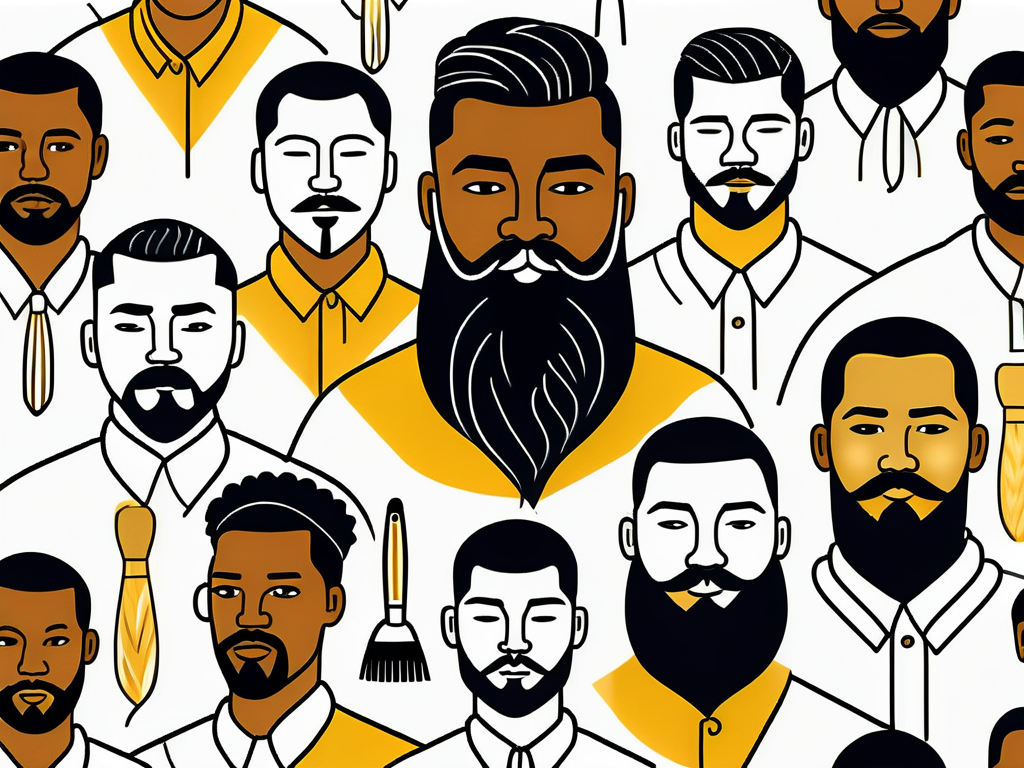 1 Million+ Happy Customers
1 Million+ Happy Customers
 1 Million+ Happy Customers
1 Million+ Happy Customers
Author: Faiysal Kothiwala
Published at: Jul 31, 2024
Did you know that some ethnicities are more prone to growing facial hair than others? It's true! From luscious beards to well-groomed mustaches, facial hair has long been associated with masculinity and style.
So, if you're wondering if your ethnicity can't grow facial hair, or you're just hear to read about fascinating patters of facial hair growth across the world, stay tuned and learn about:
There is no specific ethnicity that can't grow facial hair, but East Asian individuals, such as Japanese and Chinese, tend to have less facial hair and slower growth rates compared to other ethnicities.
Let's take a closer look at the fascinating differences across various ethnic groups.

Exploring the world of facial hair reveals a rich tapestry of diversity and cultural significance. From the rugged beards of Viking heritage to the meticulously groomed mustaches of Indian nobility, facial hair has long been intertwined with identity and tradition.
Across the globe, different ethnicities exhibit distinct facial hair patterns.
Delving deeper into the nuances of facial hair, one can observe how societal norms and historical influences have shaped grooming practices within each ethnicity.
The intricate designs of Native American facial hair or the symbolic meanings behind African tribal beard styles all contribute to the rich tapestry of global facial hair diversity.
While ethnicity does influence hair growth patterns, it is essential to remember that individual variations exist within each ethnic group. Many factors play a role here such as:
Moreover, the evolution of grooming techniques and the rise of grooming products tailored to different hair types have revolutionized the way individuals from various ethnic backgrounds approach facial hair care.
From beard oils infused with traditional herbs to specialized trimmers designed for specific hair textures, the world of grooming has become a melting pot of cultural practices and modern innovations.
When it comes to facial hair growth, numerous myths and misconceptions abound. Let's debunk these common misconceptions and separate fact from fiction.
Additionally, factors such as age, hormonal levels, and overall health play significant roles in determining the growth rate and thickness of facial hair. It's essential to consider these aspects when evaluating the growth of your beard or mustache.
In the quest for a thicker beard or mustache, many individuals turn to various hair growth products on the market. However, it's essential to approach these products with skepticism and manage expectations. While some products may enhance the appearance of facial hair, their effects on actual hair growth may be limited.
Furthermore, lifestyle choices such as maintaining a balanced diet, staying hydrated, and reducing stress can also impact the health and growth of facial hair. Adequate sleep and regular exercise can contribute to overall well-being, which may reflect positively in the growth of your beard or mustache.
It's important to consult with a medical professional or dermatologist before investing in beard growth kits. They can provide guidance tailored to your individual needs and help you separate proven remedies from mere hype.
Testosterone, the primary male sex hormone, plays a crucial role in the development and growth of facial hair. However, the relationship between testosterone and facial hair is more complex than it may seem.

Facial hair growth is not solely determined by testosterone levels; other hormones, such asdihydrotestosterone (DHT), also play a significant role. DHT, a byproduct of testosterone, is more potent and contributes to the transformation of vellus (fine, light-colored) hair into terminal (thicker, darker) hair on the face.
Testosterone is responsible for triggering the growth of facial hair during puberty. It stimulates the hair follicles, initiating the development of beard and mustache hair. However, genetics, individual hormone levels, and other factors play a role in determining the extent and thickness of that growth.
Furthermore, the sensitivity of hair follicles to androgens like testosterone and DHT can vary among individuals. Some people may have more androgen receptors in hair follicles, leading to denser facial hair growth, while others may have fewer receptors, resulting in sparser growth.
While testosterone levels vary among individuals, there is no evidence to suggest that specific ethnicities inherently possess lower testosterone levels.
Hormone levels can be influenced by various factors, including:
Therefore, it's crucial to avoid making sweeping generalizations about ethnic groups and their hormone levels.
Studies have shown that individuals of different ethnic backgrounds may exhibit varying patterns of facial hair growth.
For example, individuals of East Asian descent tend to have less facial hair compared to individuals of South Asian or Middle Eastern descent. These differences are not solely attributed to testosterone levels but also involve genetic factors that influence hair follicle sensitivity and distribution.
In conclusion, facial hair growth is a complex process influenced by a variety of factors, including genetics, hormones, and ethnicity. Therefore, a lot of different things affect facial hair growth patterns, and ethnicity doesn't play an enormous part.
If you want to enhance your grooming routine and make your beard grow, be patient, and meticulous, and get the best tools for this journey at The Beard Struggle.
Comments